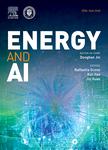Machine and deep learning driven models for the design of heat exchangers with micro-finned tubes
作者机构:Department of Information EngineeringUniversity of PadovaVia Gradenigo 6/bPadova35131PDItaly Department of Industrial EngineeringUniversity of PadovaVia Venezia 1Padova35131PDItaly
出 版 物:《Energy and AI》 (能源与人工智能(英文))
年 卷 期:2024年第16卷第2期
页 面:417-437页
核心收录:
学科分类:081704[工学-应用化学] 07[理学] 08[工学] 0817[工学-化学工程与技术] 070303[理学-有机化学] 0703[理学-化学]
主 题:Condensation Micro-finned tube Artificial neural network Machine learning Deep learning
摘 要:The design of micro-finned tube heat exchangers is a complex task due to intricate geometry, heat transfer goals, material selection, and manufacturing challenges. Nowadays, mathematical models provide valuable insights, aid in optimization, and allow us to explore various design parameters efficiently. However, existing empirical models often fall short in facilitating an optimal design because of their limited accuracy, sensitivity to assumption, and context dependency. In this scenario, the use of Machine and Deep Learning (ML and DL) methods can enhance accuracy, manage nonlinearity, adjust to varying conditions, decrease dependence on assumptions, automatically extract pertinent features, and provide scalability. Indeed, ML and DL techniques can derive valuable insights from datasets, contributing to a comprehensive understanding. By means of multiple ML and DL methods, this paper addresses the challenge of estimating key parameters in micro-finned tube heat exchangers such as the heat transfer coefficient (HTC) and frictional pressure drop (FPD). The methods have been trained and tested using an experimental dataset consisting of over a thousand data points associated with flow condensation, involving various tube geometries. In this context, the Artificial Neural Network (ANN) demonstrates superior performance in accurately estimating parameters with MAEs in the range below 4.5% for both HTC and FPD. Finally, recognizing the importance of comprehending the internal mechanisms of the black-box ANN model, the paper explores its interpretability aspects.



